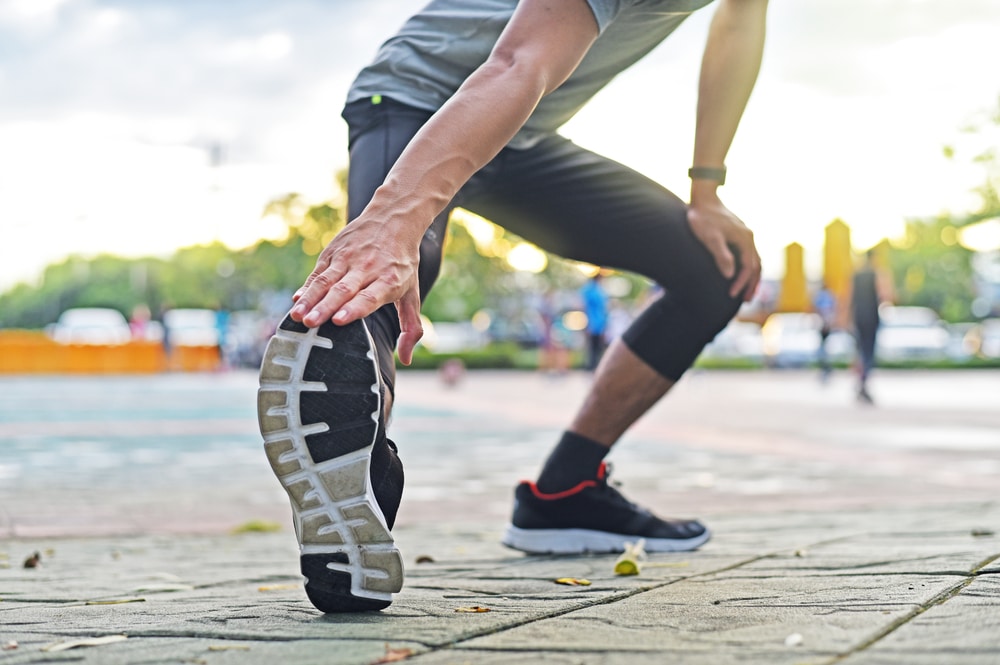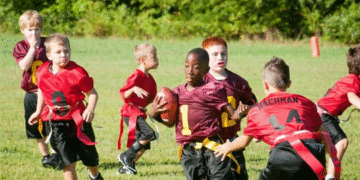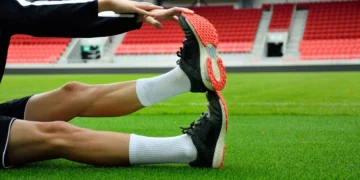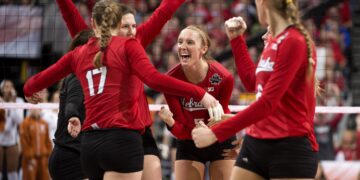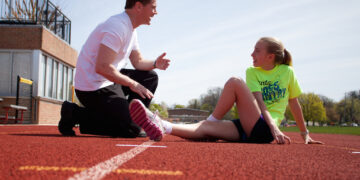Optimize Your Warm-Up Routine for Peak Performance
Maximize your workout benefits while minimizing the risk of injury by understanding the science behind effective warm-ups. Targeted routines can optimize your athletic conditioning and keep you active.
Recent research emphasizes the importance of structured warm-up and exercise programs, particularly those focused on neuromuscular training, in reducing the risk of lower limb knee injuries in athletes. These programs often lead to approximately a 25% reduction in injury risk, highlighting the importance of incorporating specific exercises into your pre-workout routine.
A comprehensive warm-up should incorporate strength, agility, and balance elements. Dynamic stretches and plyometric exercises are beneficial as they enhance motor control, awareness, and neuromuscular coordination. Neuromuscular training improves the communication between your brain and muscles, leading to better control and stability.
| Intervention Type | Relative Risk (RR) | 95% Confidence Interval | Injury Type | Population |
| Exercise Intervention (overall) | 0.75 | 0.65–0.85 | Lower limb knee injuries | Athletes (multiple sports) |
| Neuromuscular Training | 0.76 | Not stated | Lower limb knee injuries | Athletes (multiple sports) |
Data source: a systematic review and meta-analysis – PMC February 2025
The data indicates exercise interventions and neuromuscular training can reduce the risk of lower limb knee injuries among athletes. These findings support the idea that incorporating targeted warm-up routines is vital for injury prevention.
Dynamic vs. Static Stretching: Choosing the Right Approach
Unlock the secrets to injury prevention and enhanced performance by understanding the differences between dynamic and static stretching. Choosing the right type of stretching can optimize your workout and keep you in top condition.
Dynamic stretching, characterized by controlled, movement-based exercises like leg swings and arm circles, is ideal as part of your warm-up routine. It enhances blood flow, elevates heart rate, and prepares your muscles for the workout ahead. Research indicates dynamic stretching can acutely improve neuromuscular adaptability and balance more effectively than static stretching. This translates to significant gains in athletic performance metrics, such as increasing vertical jump height and enhancing sprint times.
Static stretching, which involves holding a muscle at its length without movement, is best suited for post-activity cool-downs. It facilitates muscle relaxation, improves flexibility over time, and helps reduce soreness. Both dynamic and static stretching increase joint range of motion when used appropriately. Dynamic methods stand out as superior for pre-exercise routines aimed at both boosting performance and minimizing the risk of acute injuries.
Tailored Conditioning Programs for Injury-Free Fitness
Discover how personalized conditioning programs, focusing on balance and strength, can significantly reduce injury risks. Tailoring these programs to individual needs unlocks a new level of injury prevention.
Generic fitness routines often fall short in preventing injuries. Customization is key. By adapting conditioning programs to specific populations and individual risk profiles, athletes can experience greater protective benefits.
Consistency is crucial for effective injury prevention. Research indicates that higher frequency (≥3 times per week) and longer session duration (≥20 minutes) yield better results. Integrating these elements into a personalized plan can optimize its impact. Both male and female athletes benefit from tailored conditioning programs. While the impact may vary slightly, the overall reduction in injury rates is significant for both groups.
| Category | Group | N (Intervention/Control) | IRR (95% CI) | p-Value | I^2 (%) |
| Gender | Female | 5990 / 7702 | 0.39 (0.24, 0.62) | 0.157 | 42.5 |
| Gender | Male | 1204 / 1451 | 0.50 (0.29, 0.88) | 0.178 | 44.8 |
| Intervention frequency | <3/week | 4081 / 3633 | 0.57 (0.35, 0.93) | 0.727 | 0.0 |
| Intervention frequency | ≥3/week | 1258 / 1702 | 0.43 (0.21, 0.88) | 0.238 | 28.2 |
| Intervention duration | <20 min | 3008 / 2686 | 0.54 (0.33, 0.91) | 0.544 | 0.0 |
| Intervention duration | ≥20 min | 2331 / 2649 | 0.50 (0.26, 0.93) | 0.363 | 1.2 |
Data source: NIH/National Library of Medicine, “Injury risk reduction programs including balance training reduce the incidence of ACL injuries in soccer players” March 7, 2025
Evidence suggests that injury risk reduction programs, especially those including balance training, can significantly lower the occurrence of certain injuries. The data highlights the potential benefits of adapting training programs to meet specific needs.
Smart Gear Choices for Enhanced Safety
Selecting the right protective gear is crucial for injury prevention. This guide highlights the importance of informed choices to help keep you safe while participating in various activities.
Choosing high-quality protective equipment plays a vital role in preventing injuries. Performance results emphasize the need for informed selections by users, coaches, and equipment staff. When it comes to head protection, selecting a top-performing helmet is essential. Tests rank helmets by their ability to reduce impact severity, providing a guide for making informed decisions.
| Helmet Model | Performance Category | NFL Recommendation |
| VICIS ZERO2 | Top-Performing | Recommended (Green) |
| Riddell SpeedFlex | Top-Performing | Recommended (Green) |
| Schutt F7 UR1 | Top-Performing | Recommended (Green) |
| Xenith Shadow XR | Top-Performing | Recommended (Green) |
| Riddell Speed | Not Recommended | Not Recommended (Yellow) |
| Schutt Air XP Pro | Not Recommended | Not Recommended (Yellow) |
Data source: NFL.com “Helmet Laboratory Testing Performance Results” April 11, 2025
Equipment choice should account for individual medical history. A shift toward data-driven protective gear selection is becoming more common. This approach ensures that equipment choices are based on solid evidence and testing, enhancing safety.
Listen to Your Body: Prevent Overuse and Imbalance
Understanding your body’s limits is key to staying active and injury-free. This involves paying attention to early warning signs and taking proactive steps to prevent overuse and muscle imbalances.
Overuse injuries often arise from repetitive motions without adequate rest. It’s crucial to recognize early signs such as persistent soreness, stiffness, or decreased performance. Muscle imbalances occur when certain muscle groups are stronger or tighter than their opposing groups, leading to altered movement patterns and increased injury risk.
Implementing structured warm-ups, monitoring training loads, and encouraging open communication about discomfort are essential. Individualized conditioning programs that address specific needs can also significantly reduce the risk of both acute and chronic injuries.
Q&A
Question 1: What is the primary focus of the provided text regarding injury prevention?
Answer: The text emphasizes the crucial role of proper warm-ups, stretching techniques (dynamic and static), and tailored conditioning programs in preventing injuries. It highlights the importance of understanding the science behind these practices and how they contribute to reducing the risk of muscle strains and other common injuries, particularly lower limb knee injuries in athletes.
Question 2: What are the key differences between dynamic and static stretching, and when should each be used?
Answer: Dynamic stretching involves controlled movements like leg swings and arm circles, best used during warm-ups to increase blood flow, heart rate, and prepare muscles for activity. Static stretching involves holding a muscle at its length without movement, ideal for cool-downs to relax muscles and improve flexibility. Dynamic stretching is superior for pre-exercise performance and injury reduction.
Question 3: How does neuromuscular training contribute to injury prevention, and what evidence supports its effectiveness?
Answer: Neuromuscular training improves communication between the brain and muscles, leading to better control and stability. A systematic review and meta-analysis showed that exercise interventions, particularly neuromuscular training, reduced the relative risk of lower limb knee injuries in athletes by approximately 25%.
Question 4: What factors are important in creating effective personalized conditioning programs for injury prevention?
Answer: Effective programs should be tailored to individual needs and risk profiles, going beyond generic routines. Higher frequency (≥3 times/week) and longer duration (≥20 minutes) sessions are more effective. The programs should address balance and strength, benefiting both male and female athletes. Evidence suggests that incorporating balance training is particularly beneficial in reducing injury risk.
Question 5: What role does protective equipment play in injury prevention, and what guidance is provided for selecting appropriate gear?
Answer: Choosing high-quality protective equipment is vital. The text emphasizes the importance of selecting top-performing helmets, referencing specific models recommended by the NFL based on impact reduction testing. A data-driven approach to equipment selection is encouraged to ensure informed choices based on evidence and testing.
